Last Updated on: February 5, 2025
With 13 national parks, 19 national wildlife refuges, and over 650,000 acres of important birding areas, Texas is a great state for bird lovers.
Even in private backyards, a variety of feathered friends can fly gracefully and add colors to your gardens.
However…
Anyone who has seen birds in Texas will surely find it relatable that identification can be confusing.
Learn more about Texas birds in this post! We’ll walk you through some of the most common bird species you will find in the state, including their physical characteristics and behaviors.
Identifying The Most Common Texas Birds
1. Northern Cardinal
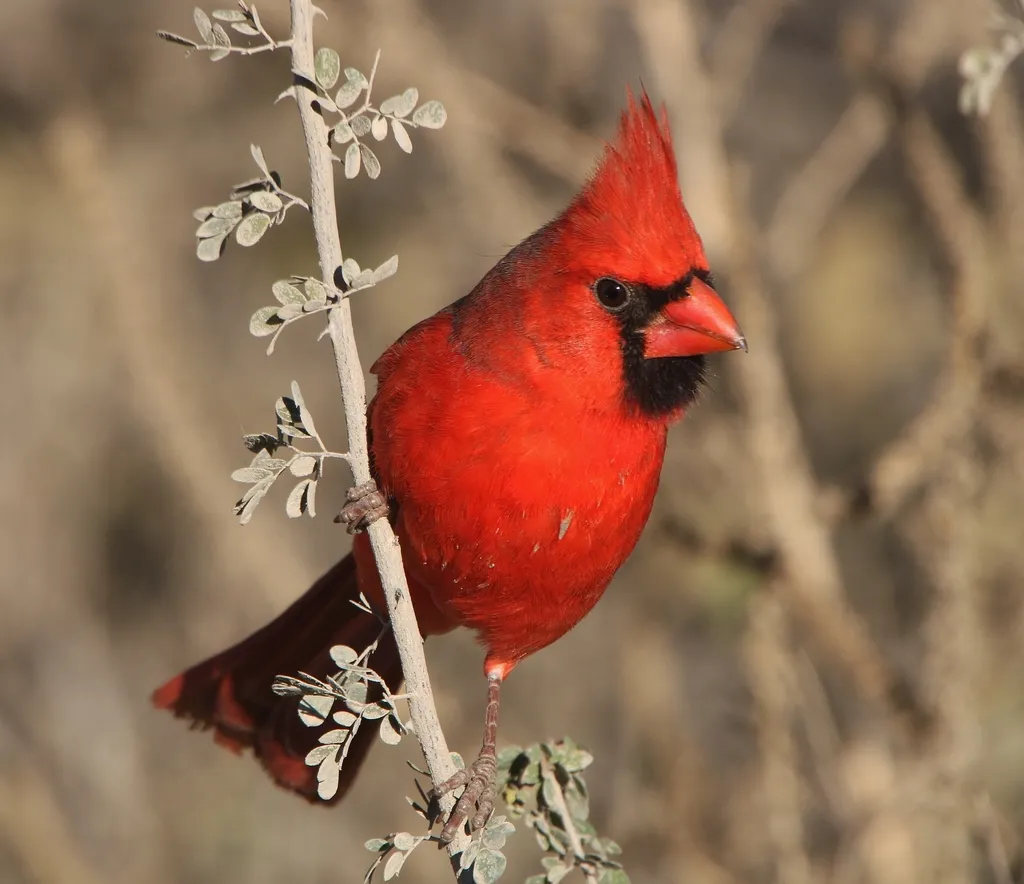
The striking beauty of this backyard bird in Texas is guaranteed to turn heads. The black mask and bright red feathers of males are unmistakable. Females, on the other hand, are duller with light brown bodies.
You will see a northern cardinal in Texas throughout the year. This resident bird of the state is also easy to attract in backyards. A northern cardinal will visit almost all types of bird feeders, especially when you fill them with black oil sunflower seeds.
These wild birds prefer dense vegetation in their natural habitat. However, you can also frequently see them in backyards and parks, among other highly urbanized locations.
2. Blue Jay
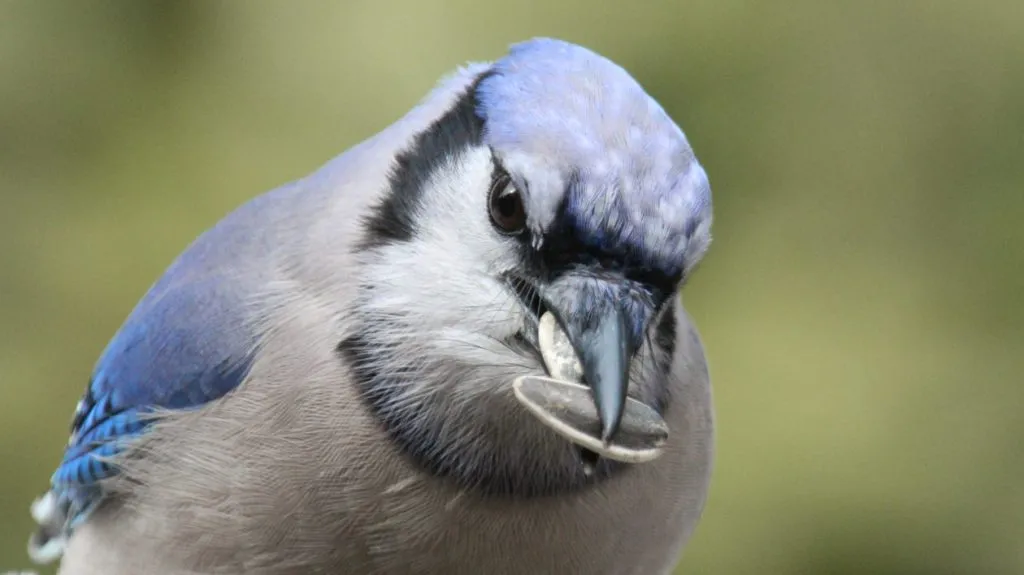
The beautiful blue feathers covering the back of blue jays are its most prominent physical feature. It has black bars throughout the upper body while the under-body is white. The blue jay also has a blue crest on the top of its head and black lace around the neck.
Aside from their striking plumage, blue jays are known for being intelligent birds. It is nice to observe them up close. To attract blue jays to your backyard, you will need hopper or tray bird feeders with suet, sunflower seeds, and peanuts.
If you want to see a blue jay in the wild, then visit forest edges with oak trees.
3. White-Winged Dove
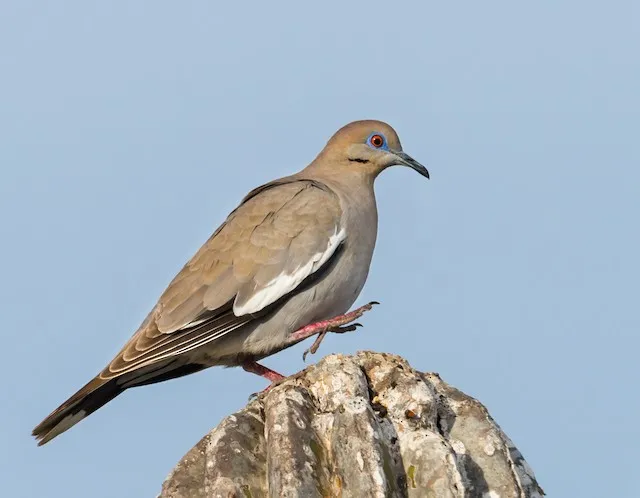
The white-winged dove has tan-brown wings with white edges. The tail is short with white tips. Meanwhile, the rump feathers have black accents. Males and females almost look alike.
Instead of bird feeders, it is more common to see white-winged doves on the ground where they are picking food. They will eat most food scraps.
You can see white-winged doves in Texas in the summer from April to October. They are most common in deserts, but they can also visit bird baths.
4. House Sparrow
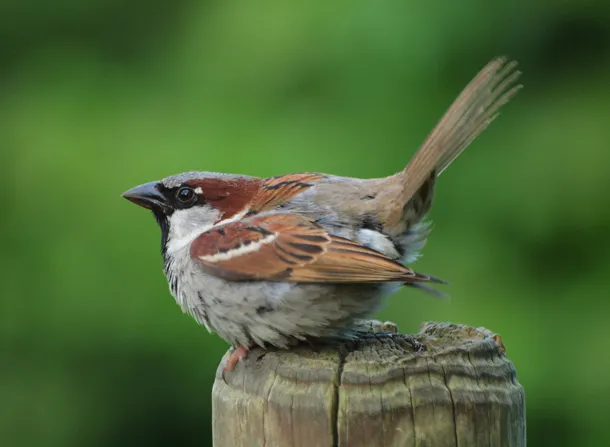
Some of the most common physical features of house sparrows are their brown wings and black bibs. They are short and stout with an average length of 5.9 to 6.7 inches.
The house sparrow is originally from the Middle East. Today, they are year-round residents of Texas, but many people consider them pests, so they are not very much welcome in backyards.
It is common to see house sparrows on fences, sidewalks, and telephone poles. They also frequent wooded farms. In private backyards, they are also visitors of bird feeders.
5. Mourning Dove
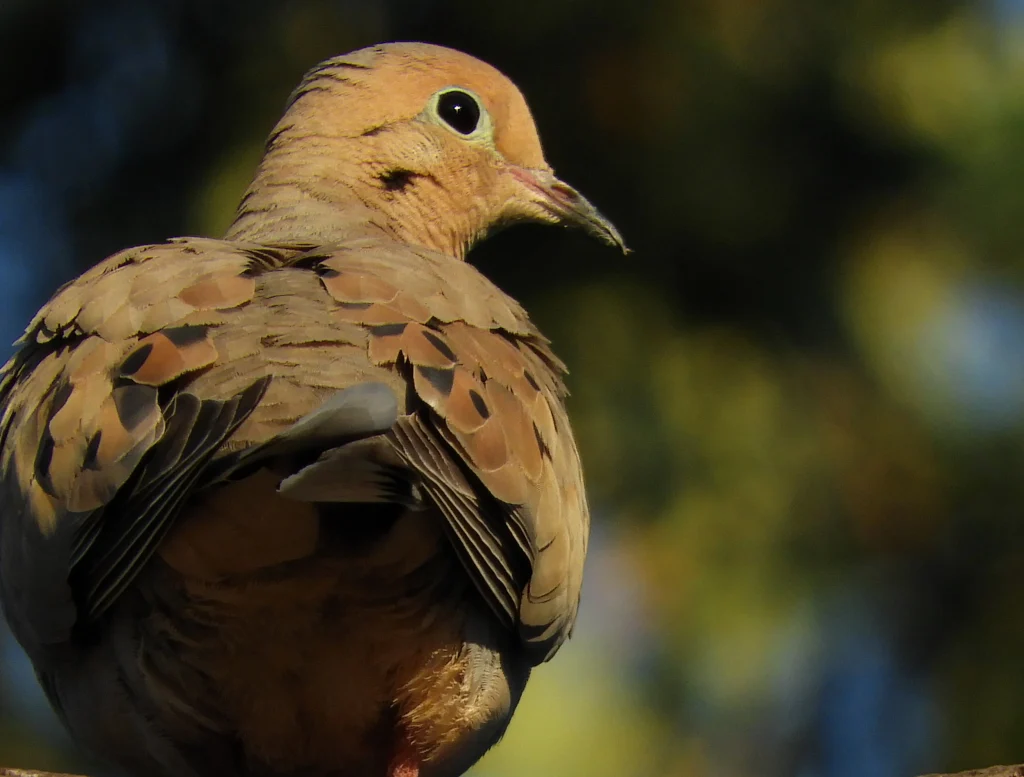
Ever wondered why it is called a mourning dove? The name is a reference to the sad cooing that it makes. The mourning dove is a common sight in backyards. It can appear as groups in large trees or pairs perching on telephone wires.
In the wild, the natural habitats of mourning doves include woodlands, thorny forests, and deserts. They also like large urbanized areas, so it is not uncommon to see them around human settlements.
They spend most of their time on the ground foraging seeds. Nonetheless, it is also possible for them to visit platform feeders, especially with corn, safflower, and sunflower seeds.
6. House Finch
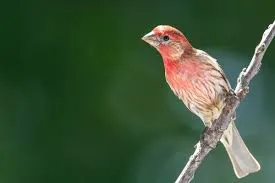
One of the most common backyard birds in Texas, the house finch does not migrate, so it is a year-round resident in the state. The original habitat of the house finch includes semi-open areas, such as chaparral, woodland edges, and dry countries.
You do not need to go far if you want to see house finches. They live even in urban and suburban areas, including residential gardens. They are noisy, so it is impossible to miss their presence.
To attract house finches, install tube feeders or platform feeders. As with most of the other birds on this list, they will eat Nyjer seeds and black oil sunflower seeds.
7. Downy Woodpecker
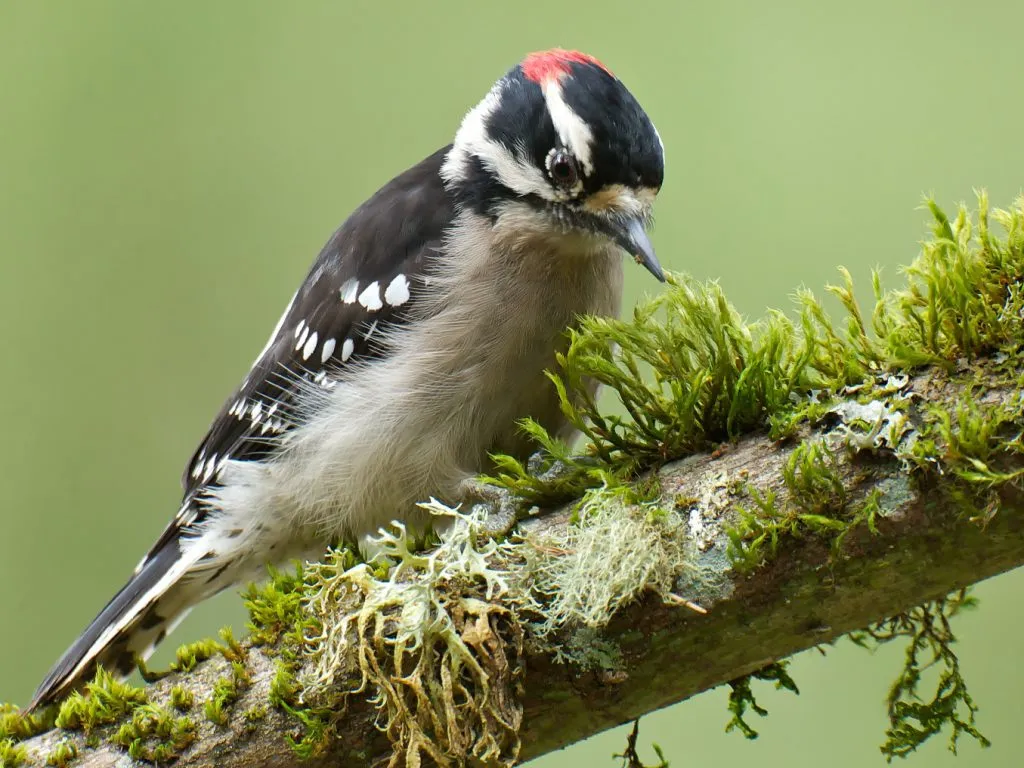
It is almost impossible to talk about backyard birds in Texas without mentioning downy woodpeckers. They are year-round residents in the state. The downy woodpecker has a chisel-shaped and small bill, wide shoulders, blocky head, and straight posture, which makes it look like it is leaning away from trees.
In terms of coloration, downy woodpeckers have checkered black and white bodies. Males are distinguished by the small red cap that you will find on the back of their heads.
The presence of downy woodpeckers is easy to detect in the spring and summer. It is noisy because of the drumming trees and its whinnying song.
8. Northern Mockingbird
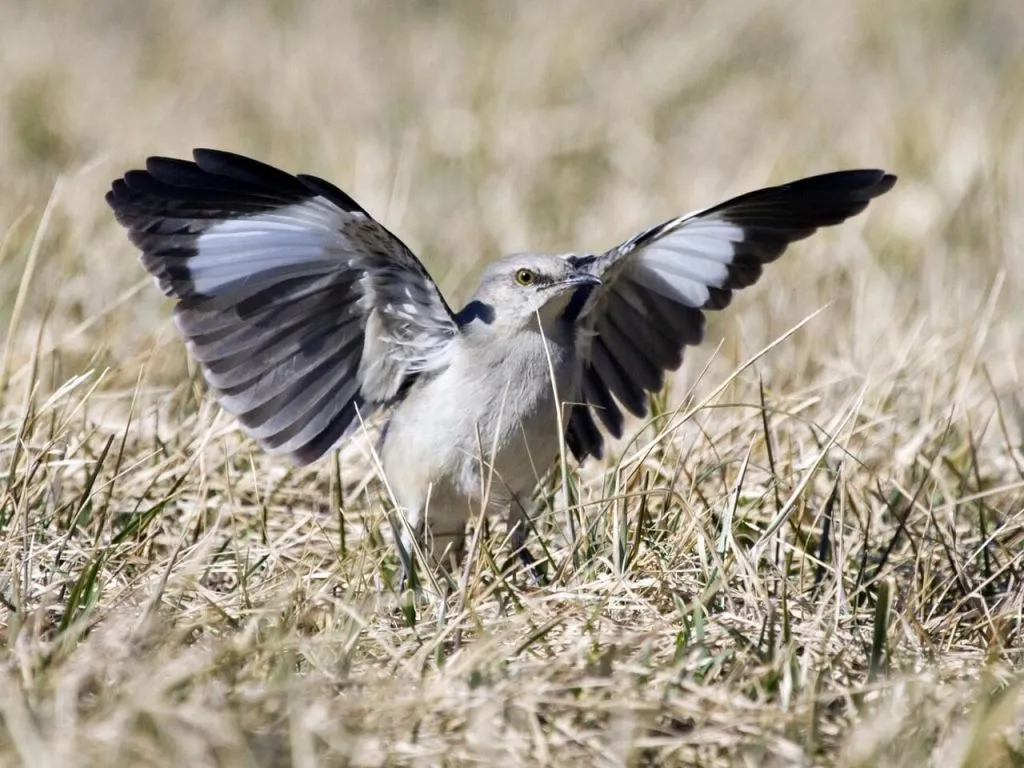
At 8.3 to 10.2 inches, northern mockingbirds are medium-sized songbirds that are present in Texas throughout the year. The northern mockingbird has a long gray tail and a small head. Most of the body is gray-brown with the undersides looking paler than the backs. When flying, you will see two white wing bars.
In the backyard, it is rare for a northern mockingbird to visit bird feeders. Instead, they prefer open lawns with fruiting bushes and trees, such as mulberries and hawthorns.
Northern mockingbirds are known for mimicking the calls of other birds. Males can imitate up to 200 songs throughout their lifetime.
9. Carolina Wren

At only 4.7 to 5.5 inches, spotting Carolina wrens can be challenging. They also move quietly through bushes, making it more difficult to spot them. Carolina wrens are most comfortable in places with dense vegetation, so you can find them in places with vines, shrubs, thickets, and bushes.
If you are unsure if it is a Carolina wren you are seeing, look at the shoulders and back, which should be reddish-brown. Around the edges of the wings, black and white dots are present. The face is largely white while the breast is orange-yellow.
While they can visit a suet feeder, these native birds will eat insects most of the time.
10. Red-Winged Blackbird
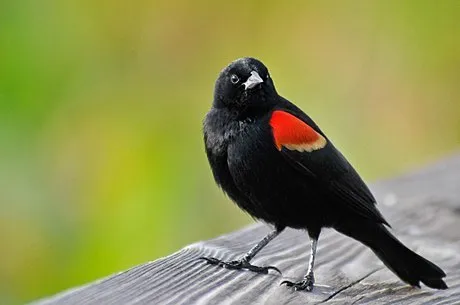
The physical appearance of a red-winged blackbird differs depending on gender. Males have all-black bodies with prominent red and yellow patches on the shoulders. Females, on the other hand, are brown with heavy streaks throughout their bodies.
These common backyard birds in Texas are year-round residents. In the breeding season, however, you will find them mostly in wet areas, including marshes. On the other hand, outside of such a season, they are present in pastures, farm fields, and grasslands.
A male red-winged blackbird is known for being a fierce defender of its territory. It can attack even humans.
11. Orange-Crowned Warbler
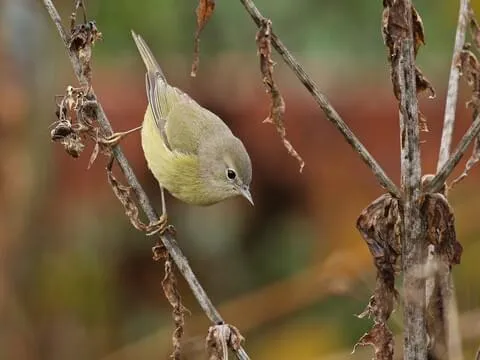
Despite its name, the orange crown of this bird is rarely seen. It is mostly yellow-olive throughout the body and not as bright as other warblers. The orange-crowned warbler is often quiet, making it difficult to see although they are more visible when they are foraging low on the ground.
Orange-crowned warblers eat insects, especially in the summer. In the winter, they will eat sap from trees drilled by other woodpeckers and sapsuckers.
For their habitats, orange-crowned warblers are most common in deciduous forests. They will spend most of their time inside shrubberies and thickets where they forage for food. It is not unusual for these birds to raid hummingbird feeders. They can also come to suet feeders.
12. Black-Crested Titmouse
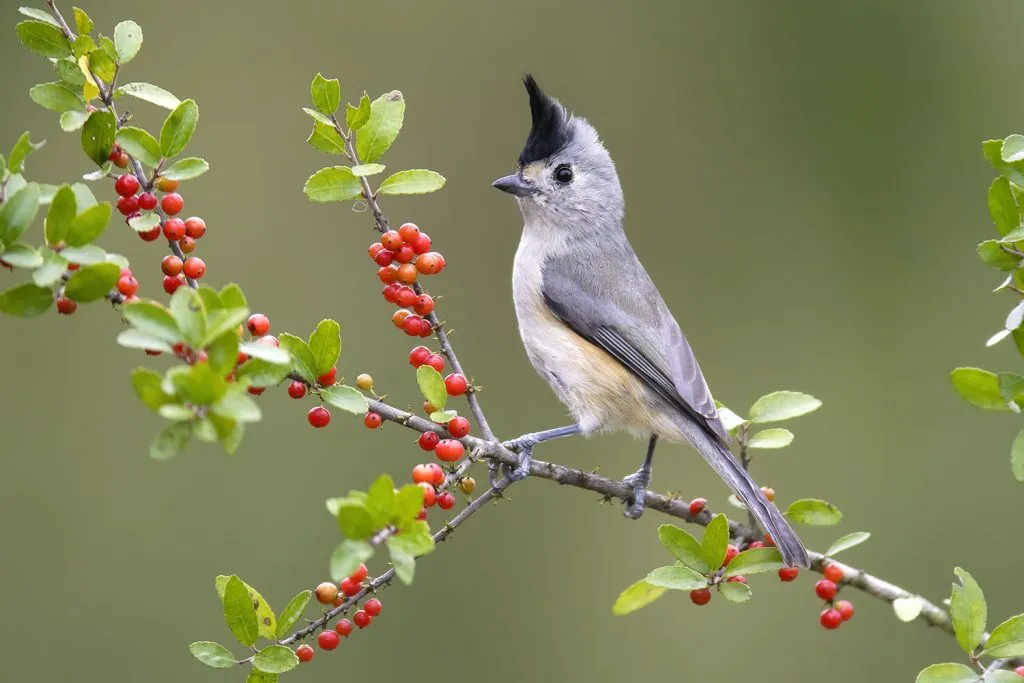
A common flying creature in central and southern Texas, the black-crested titmouse has blue-gray wings and a tail. Meanwhile, the wings get darker through the edges. The underbelly and breast are white up to the face. More so, the distinct crest has a prominent black band.
These wild birds are often seen in locations with oak trees. They can also visit bird feeders, especially those with assorted peanuts and berries.
While it is related to the tufted titmouse, the two bird species have different calls. The songs of black-crested titmouse are faster, more nasal, and have a higher pitch.
13. Yellow-Rumped Warbler
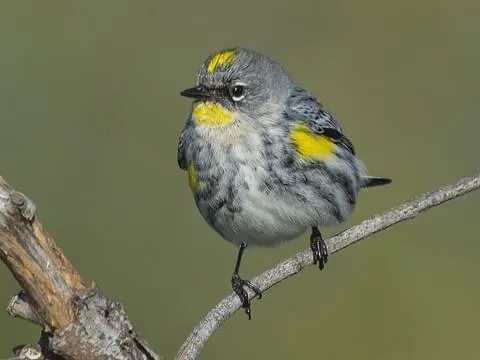
The yellow splotches under the wings make the yellow-rumped warbler recognizable. It has gray wings, tail, and back with broad white vertical lines. The breast is black and white.
Deciduous and coniferous forests are the most common habitats for yellow-rumped warblers. When they are ranging out, you can see them in parks and backyards.
They can come to bird feeders if you provide them with their favorite food, which includes peanut butter, suet, and black oil sunflower seeds. They will also consume insects, such as caterpillars, grasshoppers, gnats, and aphids.
In courtship, males will follow females almost everywhere they go while fluffing their wide feathers, raising wings, and fluttering.
14. Brown-Headed Cowbird
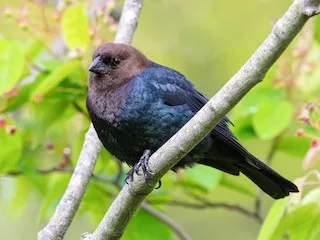
A stocky and chunky blackbird, one of the first things that you will notice in a brown-headed cowbird is the conical and thick bill. Their colors are slightly different depending on gender. The bodies of males are completely black while the heads are brown. On the other hand, females are all-brown.
These backyard birds are common sights in Texas in the summer, specifically from March to July.
In Texas, some of the most common places where you will see brown-headed cowbirds are in brushy thickets, grasslands, woodlands, and prairies. Many people do not like seeing brown-headed cowbirds in their backyards because they are considered parasite birds. They will destroy the eggs of smaller birds.
15. Red-Bellied Woodpecker
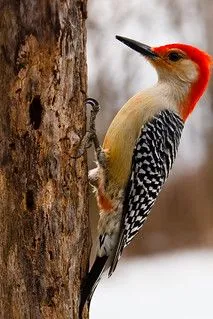
Those who are new to birding can easily confuse a red-bellied woodpecker with a red-headed woodpecker. They both have red caps. However, one of the main differences is that red-bellied woodpeckers are smaller.
Females are different from males because of the lack of a red cap at the back. Instead, they have a red coloration at the back of their head. The red belly is also extremely pale, which can be difficult to spot from afar.
Nuts, fruits, seeds, and insects are some of the most common foods for red-bellied woodpeckers. They can also feed on nestlings. You can attract them to a backyard with suet feeders.
16. American Crow
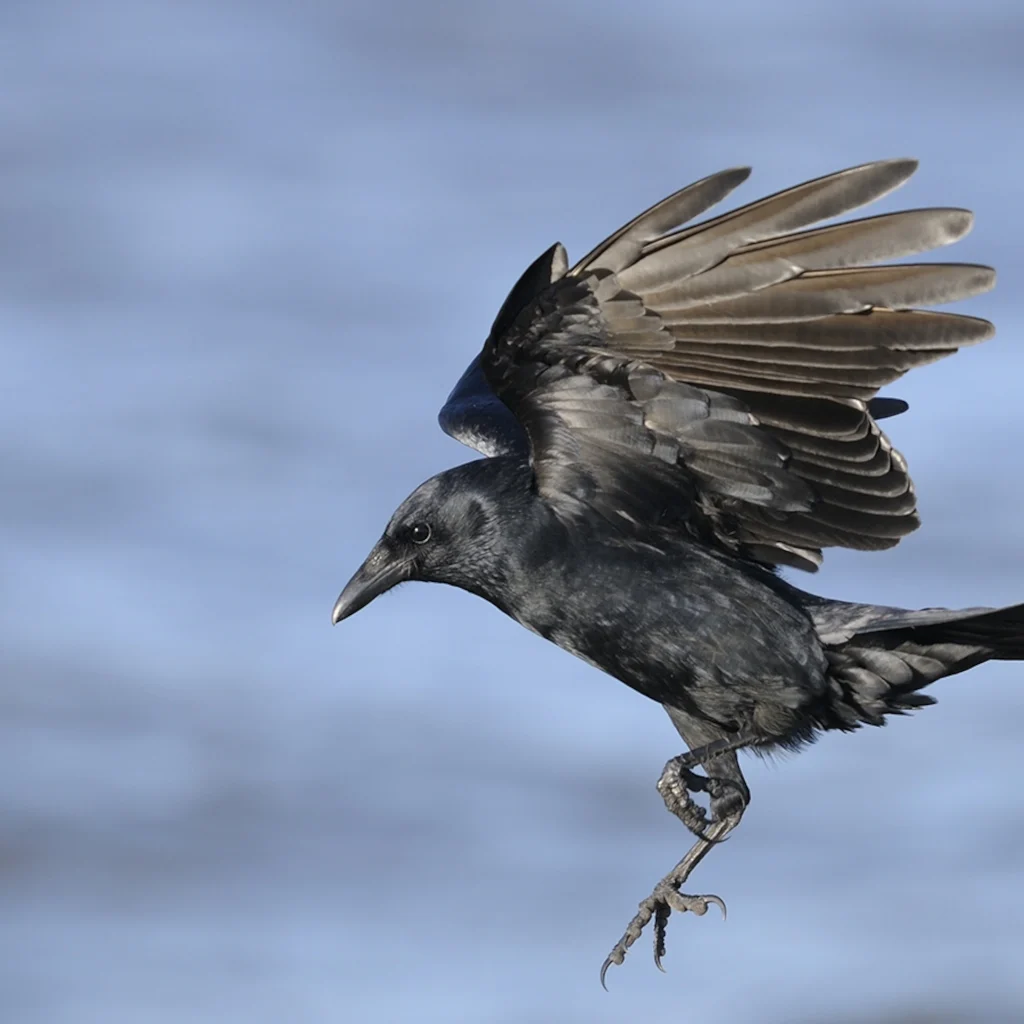
The American crow is a large bird with an all-black body. It is present in Texas throughout the year, but they are most common in the fall. American crows have diverse habitats, which include marshes, rivers, parks, farms, cemeteries, golf courses, beaches, and fields.
They will feed mostly on the ground, looking for earthworms, insects, fruits, and seeds. Your best bet of attracting them in the backyard is by installing ground feeders. They are too big for a traditional bird feeder.
In Texas, the most common places to find American crows during the breeding season are those with an elevation of 750 meters, especially pine and oak woodlands.
17. Great Blue Heron
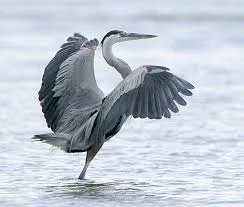
The largest heron in Texas and North America, the great blue heron stands tall and proud at a height of up to four feet. Meanwhile, its open wings can reach a width of six feet. Since they are waders, the most common places where you can see great blue herons in Texas are in marshes, coastlines, streams, and ponds.
These birds are known for being experts in fishing. They will stand still for an extended period or walk slowly until ready to attack fish with their blade-like bills. While they like hunting alone, they often nest in colonies, specifically in tall trees. Occasionally, low shrubs can also be their nesting sites.
18. Barn Swallow

As you learn about the common backyard birds in Texas, the barn swallow is one more thing that you should be familiar with.
While they have a simple coloration, barn swallows are beautiful. They have striking blue wings, tails, and backs. The underbelly and breast are red-orange. Plus, the face has a diamond-shaped black mask.
Barn swallows prefer getting their food in the wild, but it is also possible for them to visit platform feeders, especially when there are ground-up eggshells. The latter is believed to be beneficial for their digestion. You can also lure them into nest boxes.
19. Green Kingfisher

While it is not as widespread as the other backyard birds in Texas, the green kingfisher can also reside in the state. They are often found in streams and rivers, among other bodies of water. When it is foraging, the green kingfisher perches low, such as in overhanging branches and roots. After spotting its prey, it will plunge into the water with its head first.
Small fish like minnow form most of its diet. At times, it can also consume aquatic insects, especially when there is a low fish supply.
20. Burrowing Owl
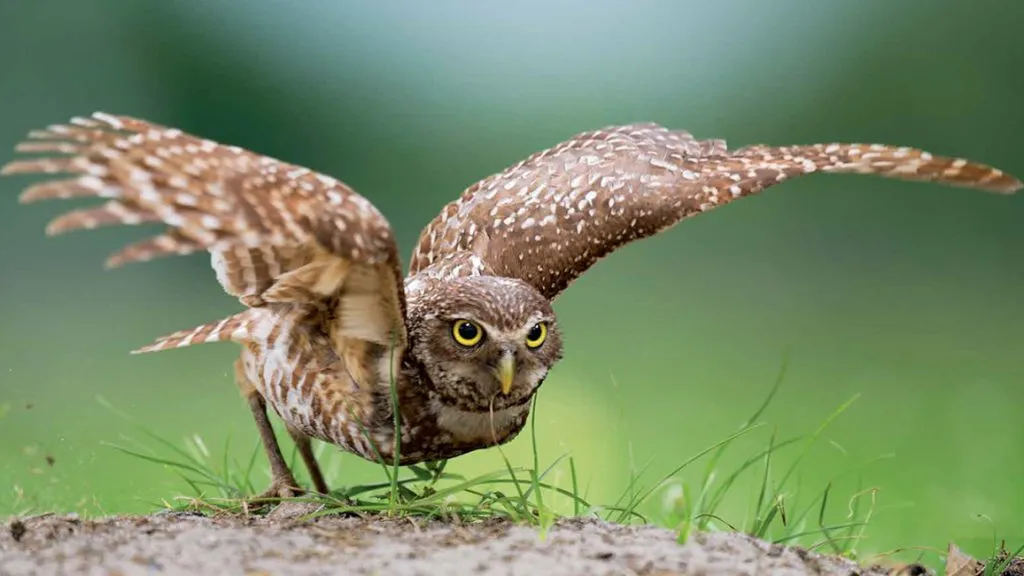
A common bird in central and western Texas, the burrowing owl has a stocky brown body with white speckles. It has long legs and no ear tufts. The bird is also easily recognizable for its yellow eyes and bold white throat.
You do not need to search if you want to see burrowing owls in Texas. They will spend most of their time perching low or on the ground when they are searching for small animals or catching insects.
These birds prefer open habitats. They are commonly found in deserts, airports, and prairies. They are also known for using the burrows of ground squirrels as their nests.
21. Pileated Woodpecker

These common birds in Texas are known for their distinct triangular red crest. Other physical identifiers include the black wings, back, and tail. The wings have white crescent patterns, which are visible when they are flying.
Occasionally, they can visit backyards with a suet feeder. However, most of their food comes from beetles and carpenter ants. At times, they will also consume nuts and berries.
Open pine forests with old and spaced trees are the preferred habitats of these Texas birds. They will use their bill to drum on trees, which is also how they mark their territories.
22. Yellow-Billed Cuckoo
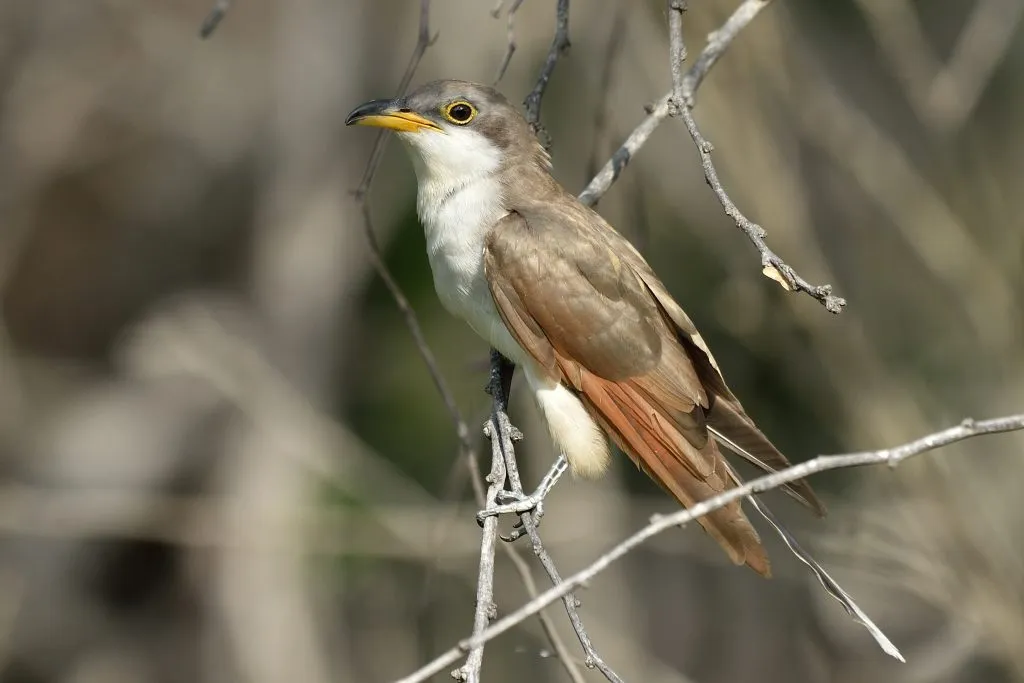
The natural range of the yellow-billed cuckoo includes North, South, and Central America. In the summer, they migrate to North America, which is when you will see them in Texas.
They have slender and long grayish-brown tails. The undersides have white spots, which are most visible when the bird is in a shaded perch. With their colors, they can be hard to observe, unlike other brighter birds.
The stuttering calls of the yellow-billed cuckoo are noticeable even when you are at a distance. They are most audible on hot and humid afternoons, earning them the nickname rain crow.
23. Eastern Phoebe
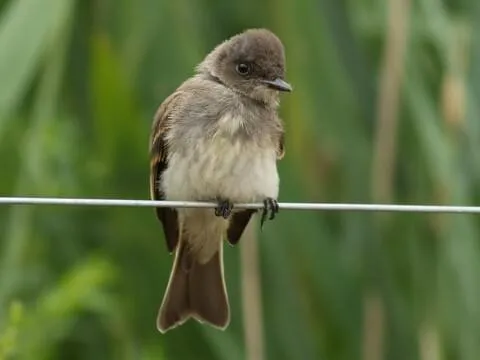
While it is simple, eastern phoebes are well-loved for their elegant color schemes. They have brownish-gray tails, wings, and backs. The tip of the feathers has minimal white highlights. The breast and underbelly, on the other hand, are snow white.
These winter birds are primarily seen in Texas from October to March. During the breeding season, you will find them in the northeastern and central United States before they migrate to southeastern states and Mexico.
Since they belong to the family of flycatchers, they eat mostly flying insects. They can also eat spiders and small fruits. If you want them to come to your backyard, it will help to plant trees that produce berries. Meanwhile, they are not attracted to a hummingbird, suet, or tube feeder.
24. Ruby-Crowned Kinglet
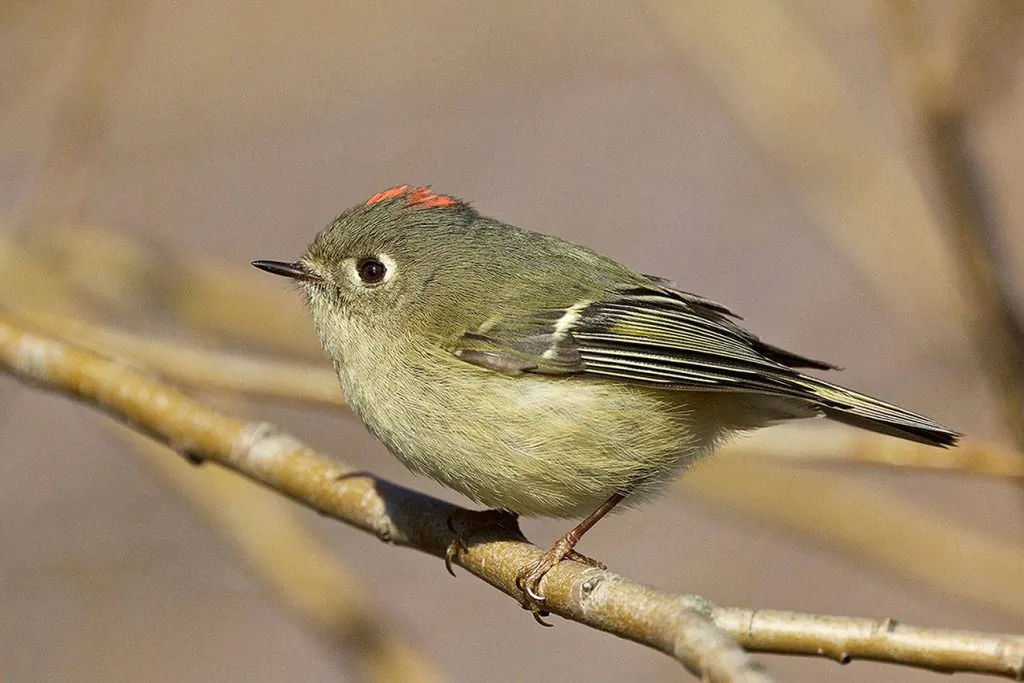
These tiny birds have a length of approximately 3.5 to 4.3 inches. The ruby-crowned kinglet has olive-gray backs with bright yellow-green markings on its wings. Males have a flat brilliant red crown, which is almost unnoticeable, especially from afar.
Ruby-crowned kinglets are winter birds in Texas, arriving in August and staying until May.
They are fast-moving and quiet, so they are difficult to spot. They will flit around in dense foliage as they search for food. Speaking of food, these birds in Texas will eat mostly insects, such as true bugs, leafhoppers, caterpillars, flies, and beetles.
25. Blue-Gray Gnatcatcher
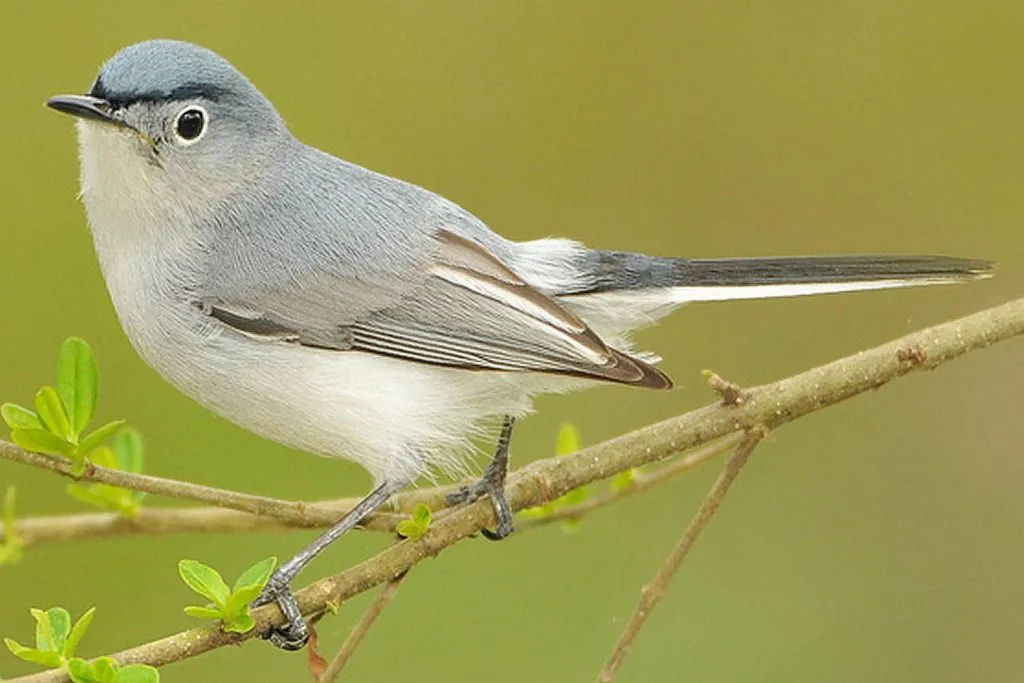
While it is tiny and slim, the blue-gray gnatcatcher has long legs and tails. The bill, meanwhile, is thin and straight.
These small birds in Texas are known for being active. Once moving, they will rarely stop. They will flutter around small insects that they find in the dense foliage of trees and shrubs.
The blue-gray gnatcatcher is nicknamed Little Mockingbird. The latter is a reference to its long tail, grayish coloration, and high nasal songs that are reminiscent of mockingbirds.
26. Tufted Titmouse
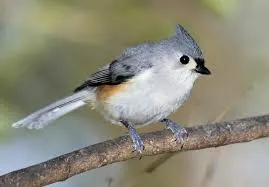
Aside from the crest on its head, the tufted titmouse is also recognizable for its grayish body with white underparts and peach sides. They also have large dark eyes and black foreheads. There is no significant difference between males and females.
It is more common in Eastern Texas than in other parts of the state. They frequent deciduous forests, city parks, and backyards. You can attract them to different types of bird feeders, especially those with suet, safflower seeds, sunflower seeds, and peanuts.
The presence of tufted titmouse is easily detected because they are vocal. They will make fast and repeated whistles.
27. Hairy Woodpecker
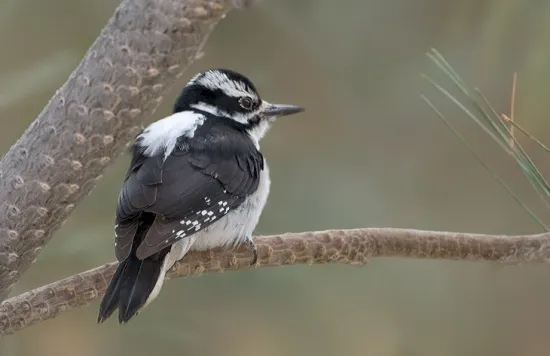
A close relative of downy woodpeckers, hairy woodpeckers are medium-sized birds with square heads. They also have straight and long chisel-like bills, which have almost the same length as the head.
They are notable for the black and white colors of their bodies, including their outer tail feathers. The head has two stripes with a distinct red flash at the back, but only for males.
In Texas, you will often see hairy woodpeckers hitching on main branches and tree trunks. At times, they will be on the base of trees looking for fallen logs.
For their habitat, mature forests are the most common. However, they can also live in open woodlands, cemeteries, parks, and other places with pine and oak.
28. Black-Bellied Whistling Duck
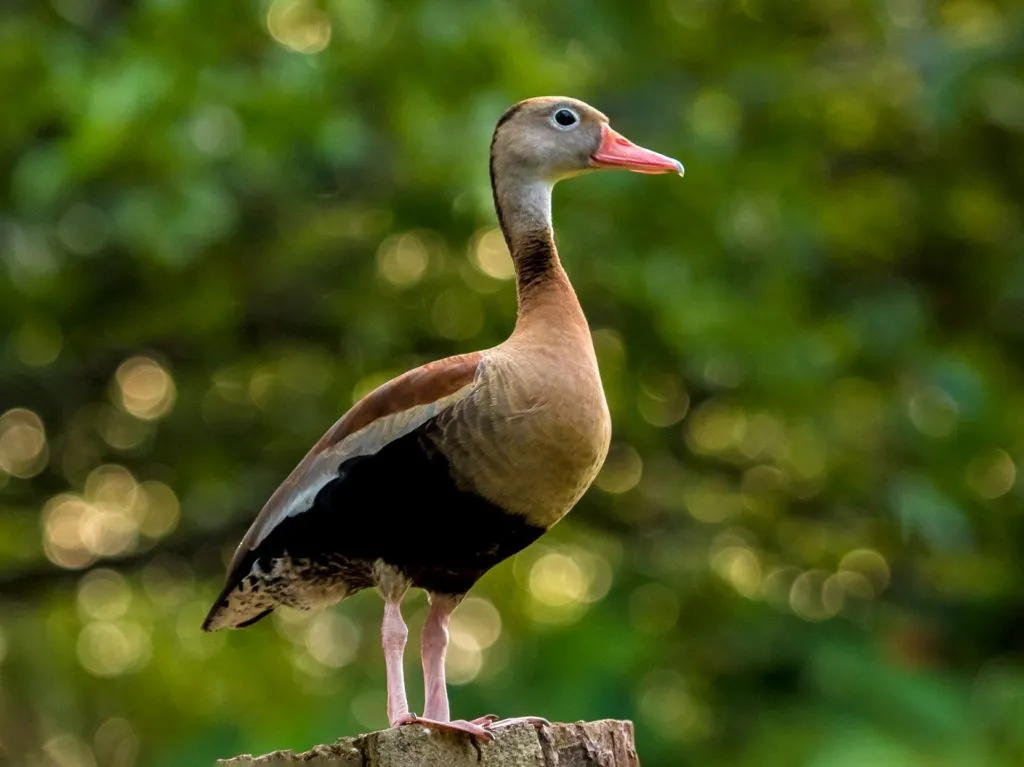
Ducks are also birds! So, they deserve a representation on this list of the most common Texas birds. They are most common in Southern Texas than in other parts of the state. Look for them in schoolyards, city parks, golf courses, and shallow ponds.
The black-bellied whistling duck is large and goose-like. It has long legs and necks and a short tail. When flying, it has a hunched back and broad wings.
This bird is dark-colored throughout the body. As the name shows, it has a black belly. More so, the breast is chestnut while the legs and bill are both bright pink in color.
29. Ruby-Throated Hummingbird
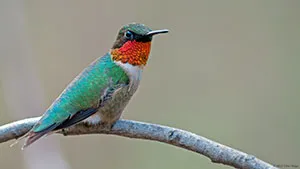
One of the most common birds in Texas during the breeding season, ruby-throated hummingbirds are amongst the most abundant hummingbirds in North America. After breeding, they migrate to Central America, which is where they spend the winter.
To identify ruby-throated hummingbirds, look at their back and crown, which should be bright green. Males are differentiated through their iridescent red throats. You will often find these birds zipping from one nectar source to the other. It catches insects mid-air and spiders straight from webs.
If you want to see these birds in the summer, look for them on woodland edges and in flowering gardens. They are also common in a nectar or hummingbird feeder.
30. American Goldfinch
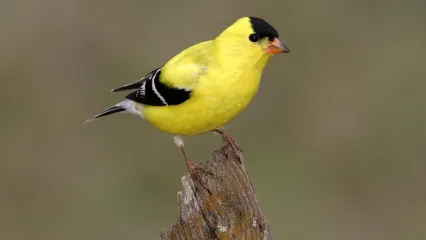
The physical appearance of the American goldfinch can vary depending on the season. Males are vivid yellow with black wings and caps in the summer. Meanwhile, females are duller and have no black caps.
In the winter, male and female American goldfinches look almost alike. They become pale brown or olive with a white bar on their black wings. For the best chances of attracting American goldfinches in your backyard, install a thistle feeder. It can also eat sunflower chips.
The American goldfinch is a strict vegetarian. It eats only seeds and not insects, which is one thing that differentiates them from most of the other birds on this list.
31. Northern Flicker
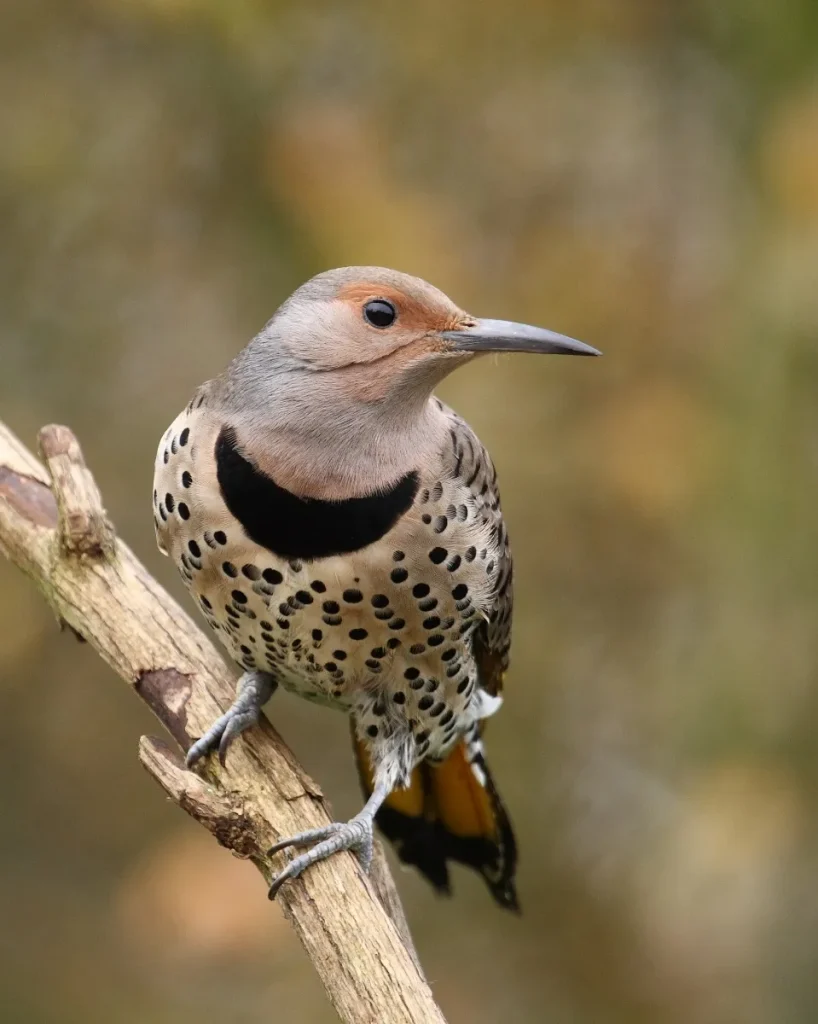
A large and brown woodpecker, one of the easiest ways to recognize a northern flicker is through the brownish body with a white rump patch that is visible during its flight. It has a rounded head, slightly downcurved bill, and flared tail.
You will find two varieties of northern flickers in Texas – yellow-shafted and red-shafted.
While northern flickers occasionally visit suet feeders, they spend most of their time digging the ground for bugs. When they visit private backyards, it is more likely that they will head to the bird bath first instead of a bird feeder.
32. European Starling
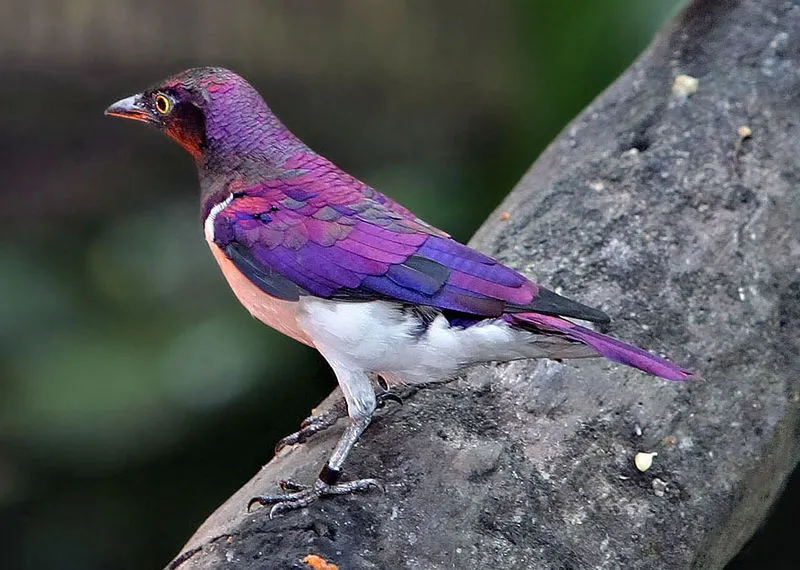
The European starling is about the size of an American robin. These stocky blackbirds are up to 9.1 inches in length with wings spanning up to 15.8 inches. It is common for European starlings to fly in noisy and large flocks, making them a nuisance. They also often perch in groups.
European starlings are seen year-round in Texas. Unfortunately, they are invasive species. Even if you do not attract them intentionally, they can show up in your backyard.
33. American Robin
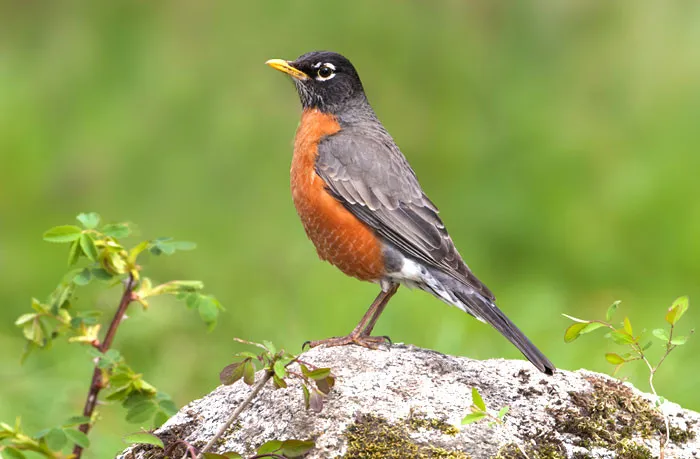
It is easy to recognize an American robin when you find one. Look for its yellow beak and red and round belly. The body is mostly gray-brown, and the heads are dark. American robins have a wide range of natural habitats, such as shrublands, pine forests, pastures, fields, golf courses, and gardens.
The most common time when you can see an American robin in Texas is in the winter, from November to March. They are frequent lawn visitors from where they tug earthworms. You can also find them visiting a bird bath.
Watch This!
Frequently Asked Questions
What birds live in Texas year-round?
Some of the most common year-round residents of Texas are northern cardinals, mourning doves, house finches, northern mockingbirds, house sparrows, brown-headed nuthatches, American robins, and red-bellied woodpeckers, and American crows.
What is the state bird of Texas?
The state bird of Texas is the Northern mockingbird, which was officially declared in 1927. It was chosen as the state’s official bird because it is believed that it is “a fighter for the protection of his home, falling, if need be, in its defense, like any true Texan.”
Where can I go birdwatching in Texas?
If you want to experience birding in Texas, some of the best spots to check out are Davis Mountains State Park, Big Bend Ranch State Park, San Angelo State Park, Fort Parker State Park, Santa Ana National Wildlife Refuge, Caddo Lake State Park, Sam Houston National Forest, and Palo Duro Canyon State Park.
Conclusion
From subtropical valleys to bald cypress swamps, Texas has a varied and rich landscape, making it a paradise for birds. The state is a great place to go bird-watching. You can even attract birds to your backyard with the right approaches.
Are there other birds in Texas that deserve a spot on this list? Make sure to leave a comment below.

